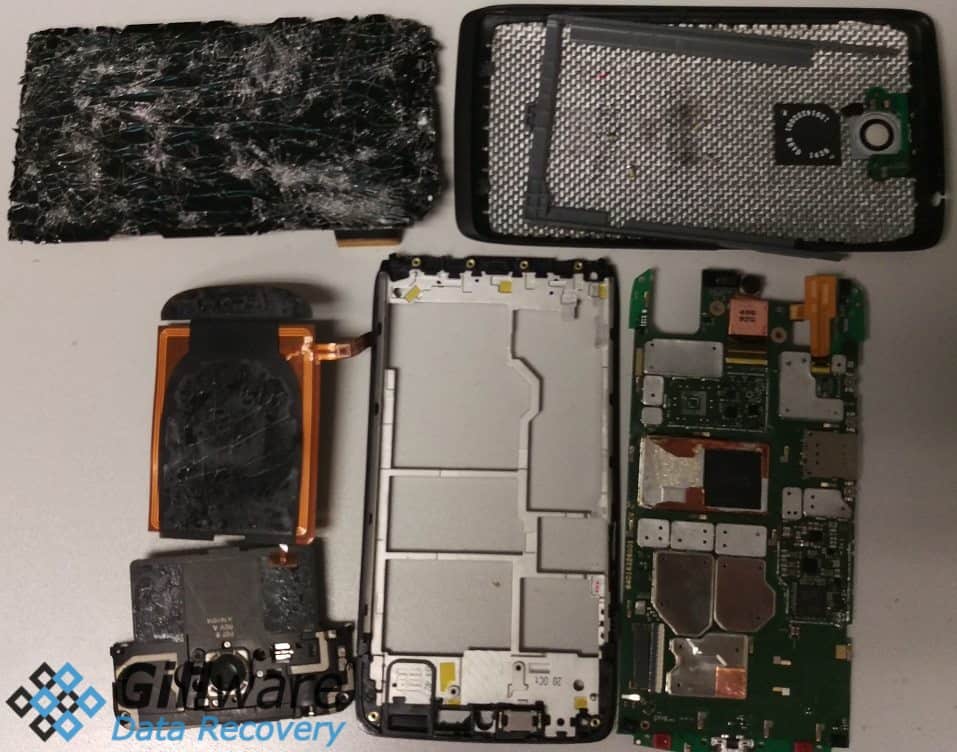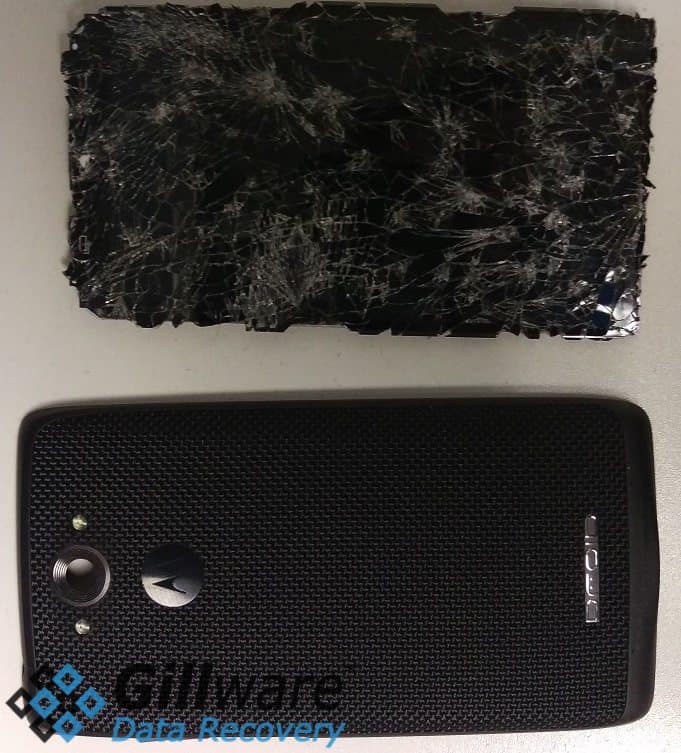Motorola Droid MOTXT1254BN64 Data Recovery Case Study
Mobile phones have become an integral part of our daily lives. Phones store our photos, our messages, our contacts, and our memories. They connect us to the world. But they are also several-hundred-dollar, fragile pieces of technology that sit in our pockets. Despite their growing importance, mobile phones are vulnerable, easy to lose, and easy to forget. In this case, the client’s phone was accidentally run over by a car. The Motorola mobile phone fared about as well as you’d expect. But our Motorola Droid MOTXT1254BN64 data recovery experts could help the client get their photos back.

Motorola Droid MOTXT1254BN64 Data Recovery Case Study: Phone Run Over By Car
Phone Model: Motorola Droid Turbo
Operating System: Android
Situation: Phone was run over by a car
Type of Data Recovered: Pictures
Binary Read: 99.9%
Gillware Data Recovery Case Rating: 9
If you let a car run over a hard drive, you would expect the drive to be utterly demolished. And you’d probably be right. Hard drives are hardly suitable data storage media for small devices that can get dropped, kicked around, stepped on, or run over. Mobile phones use sturdier stuff to hold onto their data. NAND flash memory chips don’t have to worry about read/write heads hovering nanometers above them. They also don’t have to worry about spindle motors. The chip inside your mobile phone can survive things that would destroy a hard drive.

eMMC Flash Memory Recovery
Mobile phones have a special kind of NAND flash memory chip inside them. They use eMMC chips. An eMMC chip is slower than normal NAND chips, but the controller it needs is integrated into the chip itself. This frees up space on the phone’s motherboard. It also provides an unexpected benefit for our phone data recovery technicians.
When we receive heavily damaged flash devices, our engineers often must remove the NAND chip. NAND chips can be connected to a chip reader with relative ease and then imaged. But while reading the data off of them is easy, making sense of it is harder. Data passes through a controller chip on its way to and from the NAND chip. This controller takes the jumbled mess inside your NAND chip and makes it useable. Our engineers must make our own software to emulate the controller. But eMMC chips have the controller built into them, which removes that extra step. After our engineers remove the eMMC chip from the motherboard, all we have to do to make an image of it is connect it to a specialized adapter and plug it in.
There was an additional snag in this Motorola Droid data recovery case, though. The SanDisk SDIN9DW4-326 eMMC chip had not escaped entirely unscathed from being run over by a car. The chip was overheating! (The sweltering summer weather probably had little to do with it.) Our mobile phone recovery expert Cody would insert the chip, read about ten thousand sectors or so, then have to remove the chip and let it cool down. In order to get a full image of the chip and get all of the client’s data, Cody would have to repeat this process… about 600 times. There had to be a better way.
Motorola Droid MOTXT1254BN64 Data Recovery: Hotline Bling
All electronic devices produce heat as a part of normal operation. You’ve probably felt how hot your mobile phone can get after some heavy use or a very long phone call. Heat is a huge problem for the components in your phone or computer. If it’s allowed to build up without letting enough of it dissipate, then the components can burn out. This is why your computer’s CPU has a huge heatsink and fan on top of it. The heat needs to be drawn out of the device and expelled efficiently.
Normally, your phone’s eMMC chip doesn’t have to worry about overheating. But the one in this Motorola Droid MOTXT1254BN64 data recovery case did. Fortunately, our phone recovery engineer Cody had a better idea than reading a few thousand sectors at a time from the chip. Cody set up a makeshift heatsink and fan for the chip. By drawing the excess heat away from the chip, Cody wouldn’t have to insert and re-insert the chip 600 times to read all of it. The chip imaging process ran much more smoothly, and our phone expert Cody celebrated his little victory over the forces of entropy.
We were able to get a near-perfect 99.9% read of the client’s eMMC chip. When Cody analyzed the Ext4 filesystem of the Android phone, he could recover the vast majority of the client’s photos and other documents. We rated this Motorola Droid MOTXT1254BN64 data recovery case a very high 9 on our ten-point data recovery case rating scale.
